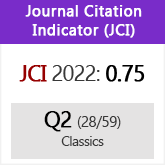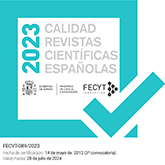Micénico, dialectos paramicénicos y aqueo épico
DOI:
https://doi.org/10.3989/emerita.1976.v44.i1.946Abstract
This paper refers to the dialectal state of Greece during the second millennium B. C. In a forthcoming issue of Emerita another article will follow on «The creation of the Greek dialects of the first millennium». According to the author Mycenaean, although closely related with the other Greek oriental dialects, would present features of its own: this dialect sometimes has innovations not found anywhere else, sometimes presents doublets while the other dialects choose one or the other form. The original kernel of Epic language is related to Mycenaean but differs from it both in archaisms and innovations. This language was altered in the beginning of the first millennium when some Homeric features were interpreted as Ionian or Aeolian and so allowed the introduction of actual Ionian and Aeolian features. On the other hand already in the second millennium might exist some varieties in the oriental Greek dialects which form the kernels of the future Ionian-Attic, Aeolian and Arcadian-Cypriot dialects. It is just these varieties which are called Para-Mycenaean by the author. It is quite trustworthy to believe that Crete was the birthplace of linear B, exported then to the Continent to be used by the official recorders. Epic Achaean language, on the contrary, is believed to be born in the Continent and to have developed in Minor Asia.
Downloads
Download data is not yet available.
Downloads
Published
1976-06-30
How to Cite
Adrados, F. R. (1976). Micénico, dialectos paramicénicos y aqueo épico. Emerita, 44(1), 65–113. https://doi.org/10.3989/emerita.1976.v44.i1.946
Issue
Section
Articles
License
Copyright (c) 1976 Consejo Superior de Investigaciones Científicas (CSIC)

This work is licensed under a Creative Commons Attribution 4.0 International License.
© CSIC. Manuscripts published in both the printed and online versions of this Journal are the property of Consejo Superior de Investigaciones Científicas, and quoting this source is a requirement for any partial or full reproduction.All contents of this electronic edition, except where otherwise noted, are distributed under a “Creative Commons Attribution 4.0 International” (CC BY 4.0) License. You may read here the basic information and the legal text of the license. The indication of the CC BY 4.0 License must be expressly stated in this way when necessary.
Self-archiving in repositories, personal webpages or similar, of any version other than the published by the Editor, is not allowed.














